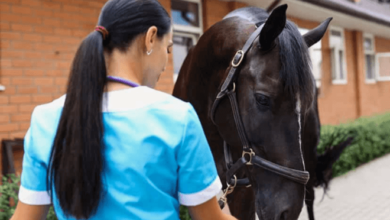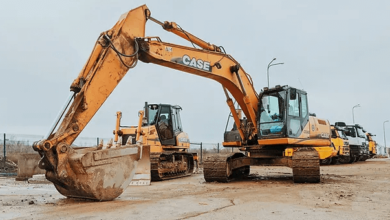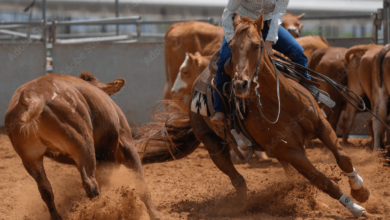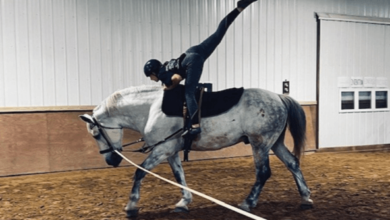How should riders communicate with each other during group rides?

Introduction
Group rides offer a unique blend of camaraderie, adventure, and shared passion for riding. Whether you’re a cyclist, motorcyclist, or an equestrian, understanding how to effectively communicate during group rides is crucial. Effective communication ensures safety, coordination, and enhances the overall riding experience. This comprehensive guide explores various methods and best practices for communication among riders during group rides.
The Importance of Communication in Group Rides
Effective communication is the backbone of any successful group ride. It ensures safety, promotes coordination, and enhances the enjoyment of the ride. Miscommunication can lead to accidents, confusion, and a less enjoyable experience. Clear and consistent communication helps riders stay informed about the group’s movements, upcoming hazards, and any necessary adjustments to the route.
Pre-Ride Meetings: Setting the Stage
Before setting off, it’s essential to have a pre-ride meeting. This meeting should cover the objectives of the ride, the planned route, and assign specific roles such as the ride leader and the sweeper. Discussing these details upfront helps in setting expectations and ensuring everyone is on the same page.
Hand Signals: The Universal Language
Hand signals are a universally recognized way of communicating among riders. They are especially useful in noisy environments where vocal communication might not be effective. Common hand signals include pointing out road hazards, indicating stops or turns, and signaling when it’s safe to pass. Practicing these signals and ensuring they are visible to all riders is crucial.
Vocal Signals: When to Use Your Voice
Vocal signals are another important method of communication, especially in situations where hand signals might not be feasible. Commands should be loud enough to be heard by all riders but not so loud as to cause confusion. Common vocal signals include instructions to slow down, stop, or change direction.
Technological Aids: Enhancing Communication
Technology can significantly enhance communication during group rides. Radios and Bluetooth headsets allow for real-time communication without the need for hand signals or shouting. Various apps designed for group riding can also assist in keeping everyone informed about the route, stops, and any changes in plans.
Establishing Roles: Who Leads and Who Sweeps?
Assigning roles within the group helps in maintaining order and ensuring safety. The ride leader sets the pace and direction, while the sweeper ensures no one is left behind. Clear understanding of these roles and responsibilities is crucial for a smooth ride.
Maintaining Formation: Staying Organized
Riding in a well-organized formation helps in maintaining safety and coordination. Common formations include single file and staggered. Adjusting spacing based on the riding conditions and maintaining consistent positioning helps in avoiding accidents and ensuring smooth navigation through traffic.
Handling Hazards: Communicating Dangers
Encountering hazards is inevitable during any ride. Communicating these dangers effectively is vital. Riders should be trained to recognize and signal hazards such as road obstacles, adverse weather conditions, or wildlife. Clear and timely communication ensures that all riders can take appropriate action to avoid these hazards.
Navigating Intersections: Clear Directions
Intersections can be challenging, especially for large groups. Clear and precise communication regarding stopping, turning, and yielding is essential to navigate intersections safely. This ensures that all riders understand the intended movements and can act accordingly.
Passing Protocols: Overtaking Safely
Overtaking other riders or vehicles requires careful communication to ensure safety. Signals should be given well in advance, and riders should be aware of their surroundings to avoid collisions. Maintaining a safe distance and being mindful of other riders’ movements are key to safe passing.
Emergency Situations: Responding Effectively
Accidents and breakdowns can occur unexpectedly. Having a clear plan and communication strategy for emergencies is essential. This includes knowing how to signal for help, providing first aid, and ensuring all riders are accounted for.
Maintaining Pace: Speed Consistency
Keeping a consistent pace is important for group cohesion. The ride leader should set a speed that is comfortable for all riders, and adjustments should be communicated promptly. Adapting to changes in terrain and ensuring that no rider is left behind helps in maintaining group unity.
Fuel and Rest Stops: Planning Ahead
Scheduled breaks for fuel and rest are essential for a successful group ride. Communicating the planned stops in advance and ensuring everyone is aware of the locations and timing helps in avoiding confusion and ensuring that all riders are prepared.
Managing Group Size: Ideal Numbers
The size of the group can significantly impact communication and coordination. Smaller groups are easier to manage and communicate with, while larger groups may need to be split into smaller units with designated leaders. This ensures effective communication and safety.
Communicating Fatigue: Recognizing and Responding
Fatigue can affect a rider’s performance and safety. Recognizing the signs of fatigue and communicating the need for breaks is crucial. Riders should be encouraged to speak up if they need to rest, ensuring that the group remains safe and alert.
Encouraging New Riders: Inclusion and Support
Inclusion of new riders requires additional communication and support. Experienced riders should take on a mentorship role, providing guidance and encouragement. This helps in building confidence and ensuring that new riders feel included and supported.
Dealing with Conflicts: Resolving Issues
Conflicts can arise during group rides due to differences in opinions or riding styles. Open communication and mediation are essential in resolving these issues. Maintaining harmony within the group ensures a more enjoyable and cohesive ride.
Post-Ride Debrief: Reflecting on the Ride
A post-ride debrief allows riders to reflect on the ride, share highlights, and discuss areas for improvement. This feedback is valuable for planning future rides and ensuring continuous improvement in communication and coordination.
Cultural Differences: Respecting Diversity
Group rides often include riders from diverse backgrounds. Respecting cultural differences and understanding riding etiquette in different cultures enhances inclusivity and ensures a respectful riding environment.
Legal Considerations: Staying Informed
Riders must be aware of local laws, insurance requirements, and riding permits. Staying informed about legal considerations ensures compliance and avoids any legal issues during group rides.
Adapting to Different Terrains: Communication Adjustments
Different terrains require different communication strategies. Urban environments, rural areas, and off-road riding each present unique challenges. Adapting communication methods to suit the terrain ensures safety and efficiency.
Weather Changes: Staying Informed
Weather conditions can change rapidly, affecting the safety and comfort of the ride. Using weather apps and real-time updates helps in staying informed and making necessary adjustments to the ride plan.
Encouraging Camaraderie: Building Bonds
Building bonds and encouraging camaraderie among riders enhances the group riding experience. Social interactions, team spirit, and shared experiences foster a sense of community and belonging.
Maintaining Equipment: Pre-Ride Checks
Regular maintenance and pre-ride checks of bikes or motorcycles are essential for safety. Ensuring that all equipment is in good working condition prevents breakdowns and accidents.
Personal Safety Gear: Communication Tools
Wearing appropriate safety gear, such as helmets, reflective gear, and lights, enhances visibility and communication among riders. These tools are essential for safe and effective group riding.
Training and Workshops: Improving Skills
Participating in training sessions and workshops helps in improving communication skills and group dynamics. Regular practice and skill development ensure a safer and more enjoyable riding experience.
Documenting Rides: Sharing Experiences
Documenting rides through photos, videos, and ride logs allows riders to share their experiences and memories. This fosters a sense of community and provides a platform for reliving the adventures.
Engaging with the Community: Building Networks
Engaging with local riding groups, online forums, and community events helps in building networks and staying connected. This enhances the group riding experience and provides opportunities for learning and growth.
Sustainable Riding Practices: Eco-Friendly Tips
Adopting sustainable riding practices minimizes environmental impact. This includes using eco-friendly products, minimizing waste, and promoting awareness about environmental conservation.
Future Trends: Evolving Communication Technologies
The future of group ride communication is evolving with advancements in technology. Innovations such as advanced communication systems, real-time tracking, and virtual reality training tools are set to transform the group riding experience.
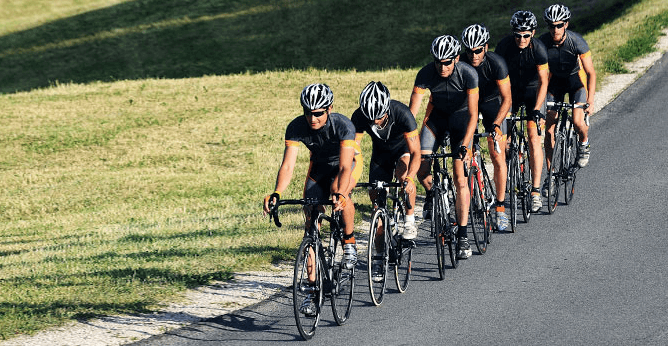
FAQs
How can I ensure effective communication during group rides? Ensure all riders are familiar with hand signals, vocal commands, and any technological aids being used. Pre-ride meetings and role assignments also help in setting clear expectations.
What are the common hand signals used in group rides? Common hand signals include pointing out road hazards, indicating stops or turns, and signaling when it’s safe to pass. Practicing these signals ensures they are clear and visible.
How do I handle communication in large riding groups? For large groups, consider splitting into smaller units with designated leaders. Use technological aids like radios or Bluetooth headsets for real-time communication.
What should I do in case of an emergency during a group ride? Have a clear plan and communication strategy for emergencies. This includes knowing how to signal for help, providing first aid, and ensuring all riders are accounted for.
How can new riders be included and supported during group rides? Experienced riders should take on mentorship roles, providing guidance and encouragement. Pre-ride meetings and clear communication help in making new riders feel included and supported.
What are the legal considerations for group rides? Riders must be aware of local laws, insurance requirements, and riding permits. Staying informed about legal considerations ensures compliance and avoids legal issues during group rides.
Conclusion
Effective communication during group rides is essential for safety, coordination, and enjoyment. By understanding and implementing various communication methods, riders can ensure a smooth and successful group riding experience. From pre-ride meetings to the use of advanced technologies, clear and consistent communication is the key to a memorable and safe ride.



